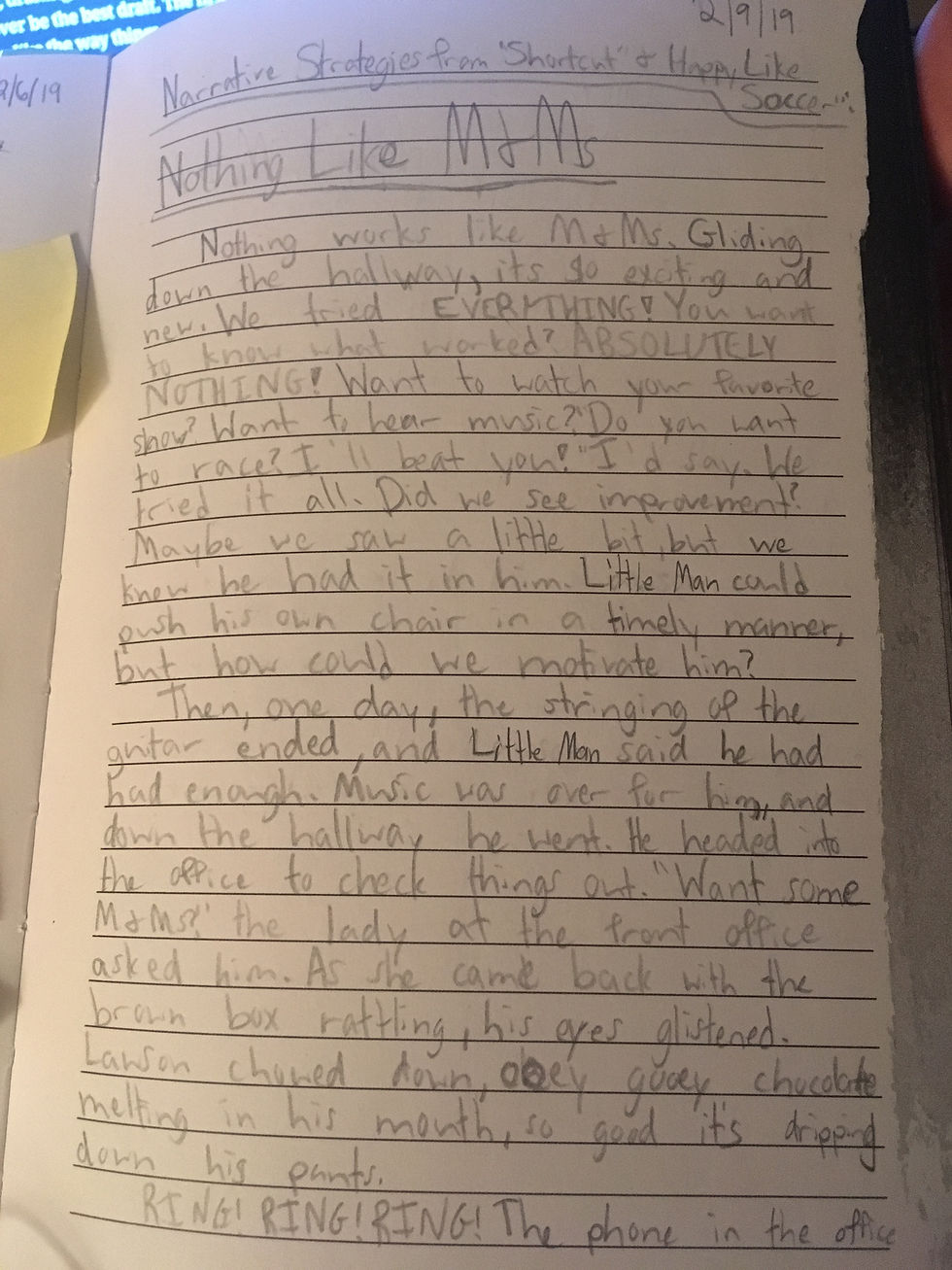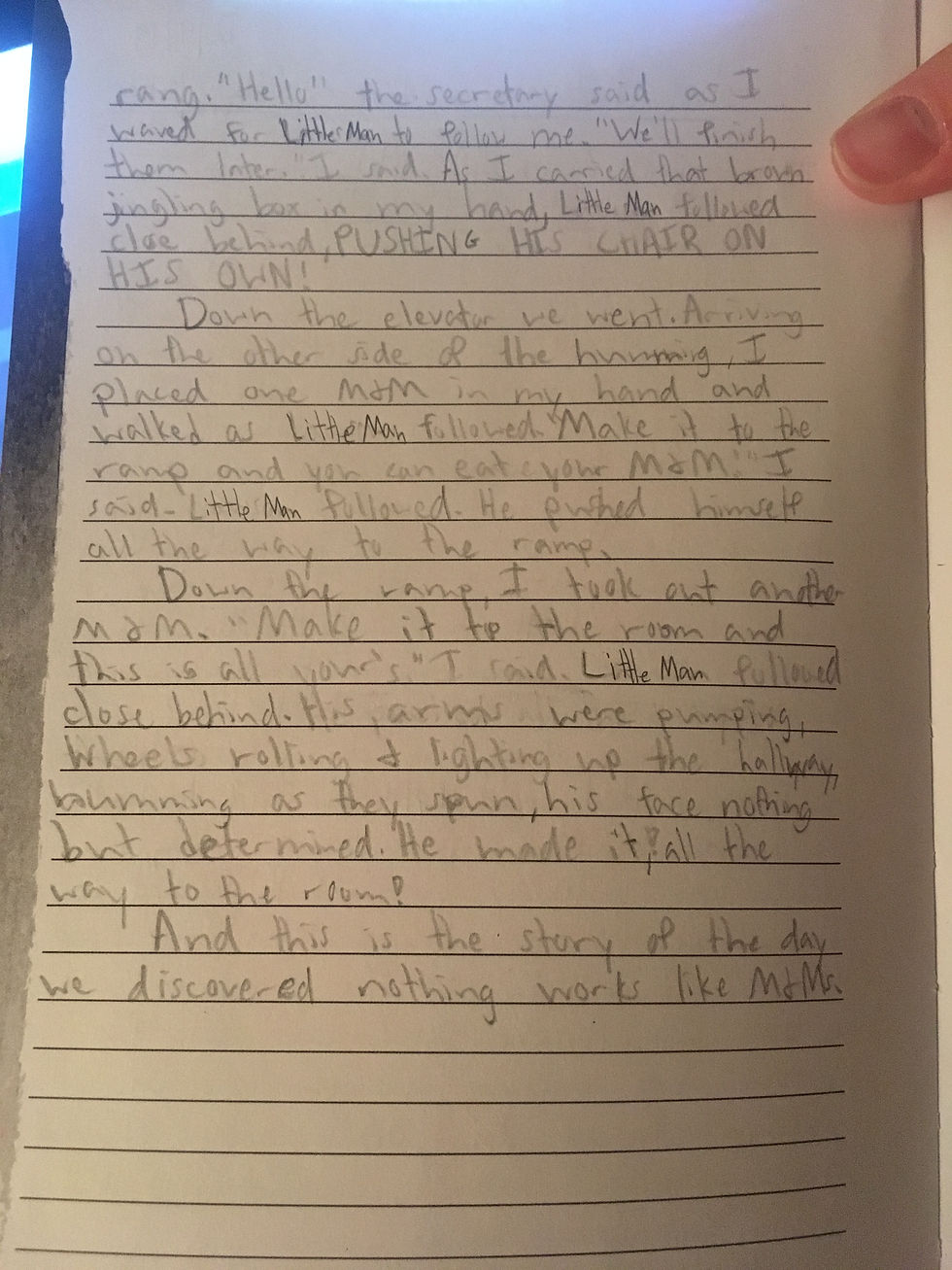Wait, You Need to Revise Before You Publish?!?
- smithkb2
- Feb 23, 2019
- 3 min read
After a little over a MONTH of drafting, I FINALLY published my first piece. As I talked about in one of my earlier posts, the writing cycle is not as straightforward as many think and were taught. You may find yourself in the edting part of the process when you read it and decide that you are not working on a draft you see worthy of publishind and back to an earlier stage you go, and that is okay! However, the hope is to eventually reach the point in which you publish a piece. I have finally made it! Throughout writing this piece, I used multiple mentors texts and many revision strategies. I could probably write a book about the many strategies I used in this piece, but today I want to tell you about one revision strategy...moving paragraphs.
If you had asked me a month ago if I would be willing to move the paragraphs in my story around, I would have said you were insane. I wrote my story in the order I wanted and that is not something to switch up. Revision is for tweaking, not changing the order of the story...WRONG! When revising, I decided to step out of my comfort zone a bit and switch up the order of my paragraphs. I got this idea from Mentor Texts, but it came in handy when I realized my early draft was exactly what I did not want, a timeline of events. However, this story is very dear to my heart, and I really did want to get it to the publishing stage.
To change the order of the paragraphs in my story, it required that cut out areas and add in a few pieces. When I was done, my story turned out to be much shorter than the original draft, but this worked, seeing as I was probably too longwinded in the early drafts anyways. However, this could be a bit tricky with children. Their stories may start as a bot of timeline, as did mine, but they will probably not be as long. There is nothing wrong with a short story, but I could see the possibility of children's stories becoming too short after changing the order of the paragraphs. This could be fixed by giving them suggestions of things that could add to the story.
My piece is so much stronger than it was before changing the order of the paragraphs. As I mentioned earlier, my early drafts sounded a bit like a timeline of events. I thought of each little detail as important, but readers would be easily bored. When I moved the paragraphs around, it challenged me to figure out what I found to be most important and share that with my audience.
Throughout the first part of this semester, I have grown both as a narrative writer and as a teacher of narrative writing. If you had asked me to revise a story, in the beginning of the semester, I would have read through what I had written and added a comma or two and changed the wording here and there. I would have NEVER changed the order of the paragraphs. That would ruin my story. My main issue was that I did not know how to draft. I would spend all the time in the world writting my first draft and become attached to the story. However, through new strategies for finding ideas, drafting, and revising, I have come to terms with the fact that the first draft will never be the best draft. The first draft is where you plop your ideas onto paper. If you like the way things are going, you add to it. If you like the story, but not the way it is headed, you switch it up. If your first draft is just a no go, you scratch it, and that is okay! I cannot wait to share many of these strategies that helped me, such as making a heart map, writing falsh drafts, and moving paragraphs to name a small few, to help my students see writing as an ongoing process that may take a week, a month, or even a year.
Here are a few pictures of my now published piece while it was still in the works!







References
Dorfman, L. R., & Cappelli, R. (2017). Mentor Texts: Teaching Writing through Children’s Literature, K-6 (2nd ed.). Portland, ME: Stenhouse.



I really liked how you made a point to emphasize the length of your drafts. I often get students asking me "how long does it have to be?" and I think that it's super important to let students know that when we are drafting, we shouldn't be focusing on length but rather the quality of the story.
I really enjoy the overall structure of your writing. It's refreshing to read a story that isn't just paragraph after paragraph. Moving paragraphs can be a great strategy for longer pieces. There have been many times when the flow of my paragraphs just doesn't feel right and moving them around makes it much better. Thanks for sharing your writing!
Your story is so sweet, I can definitely see how it is near and dear to your heart. Thinking about the things you said in your post and how your story ended up shorter than the original draft - it's funny how we can put in weeks and weeks of work to have a final draft that is much shorter than you had expected. But I think that all of your hard work and revision was well worth it! Your story is definitely strong, full of emotion and even details!